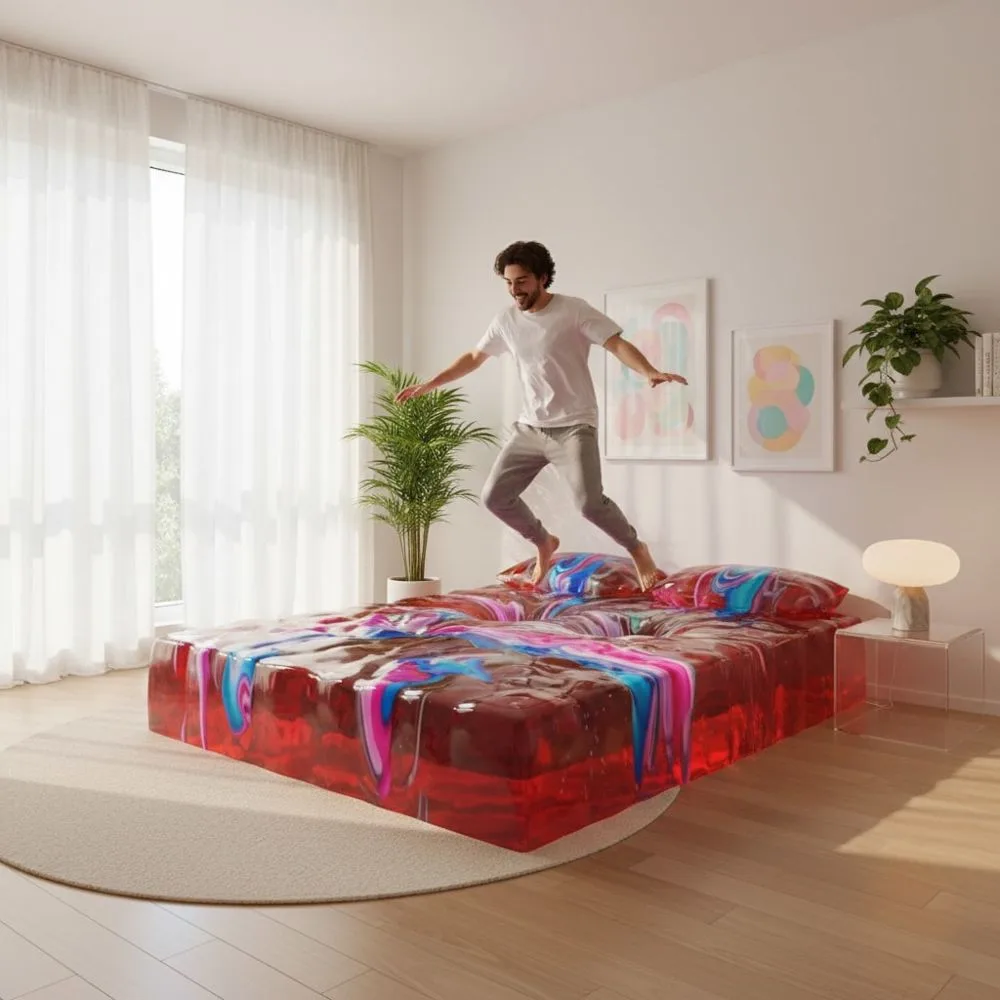When it comes to achieving the perfect night’s sleep, the right mattress can make all the difference. In recent years, jelly beds have emerged as a fascinating alternative to traditional sleeping surfaces, offering a unique blend of support, comfort, and innovative technology. Whether you’re dealing with chronic pain, sleeping hot, or simply looking to upgrade your sleep experience, understanding what jelly beds offer can help you make an informed decision for your bedroom.
What Are Jelly Beds and How Do They Work
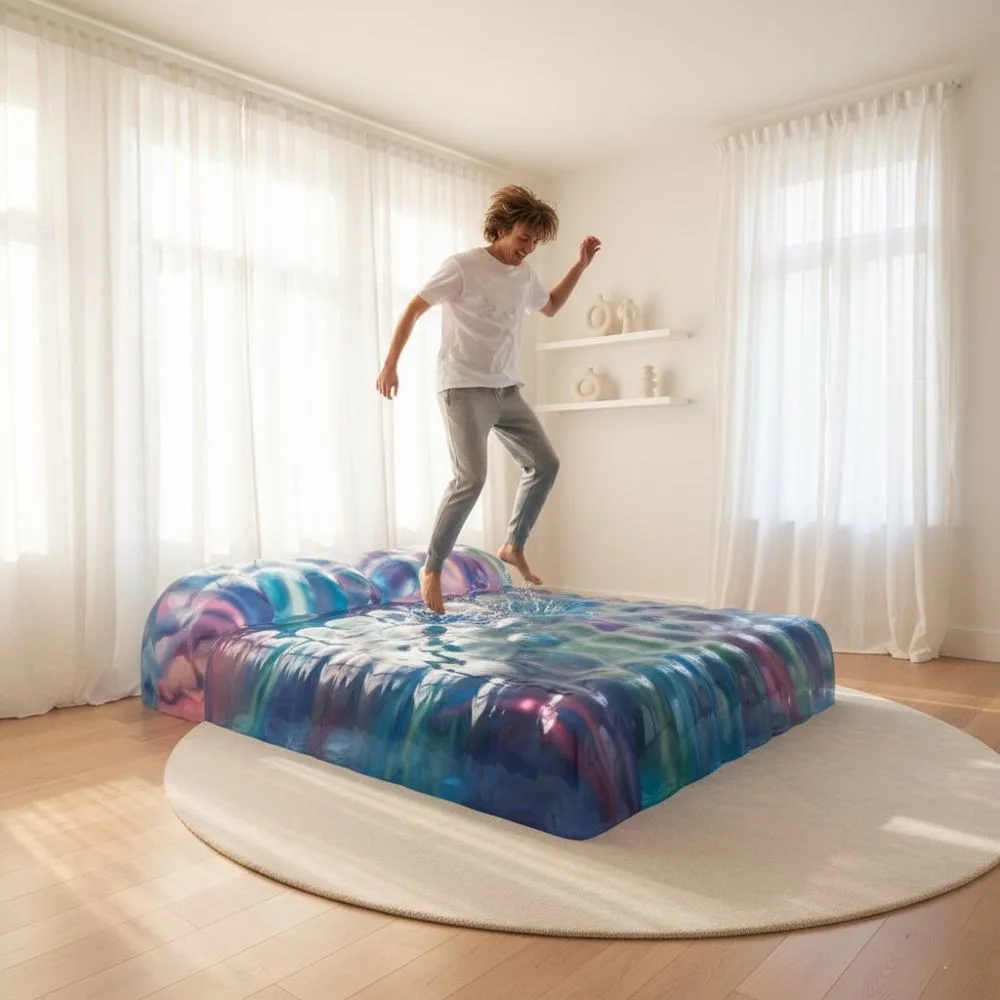
Jelly beds represent a modern evolution in sleep technology, incorporating gel based materials into their construction to create a distinctive sleeping surface. Unlike traditional mattresses that rely solely on springs, foam, or air, these beds utilize gel compounds that provide a unique combination of support and adaptability.
The core technology behind jelly beds involves specially formulated gel materials that respond to body temperature and weight distribution. This gel layer can be integrated into various mattress types, including memory foam hybrids, standalone gel mattresses, or even toppers that transform existing beds. The gel component typically consists of polymer based substances that maintain their structure while offering exceptional pressure relief and temperature regulation.
What makes these beds particularly interesting is their ability to conform to your body shape while maintaining proper spinal alignment. The gel material distributes weight evenly across the surface, reducing pressure points that commonly cause discomfort during sleep. This technology has been refined over years of research and development, drawing inspiration from medical applications where gel materials have long been used for pressure relief and comfort.
The Science Behind Gel Technology in Sleep Surfaces
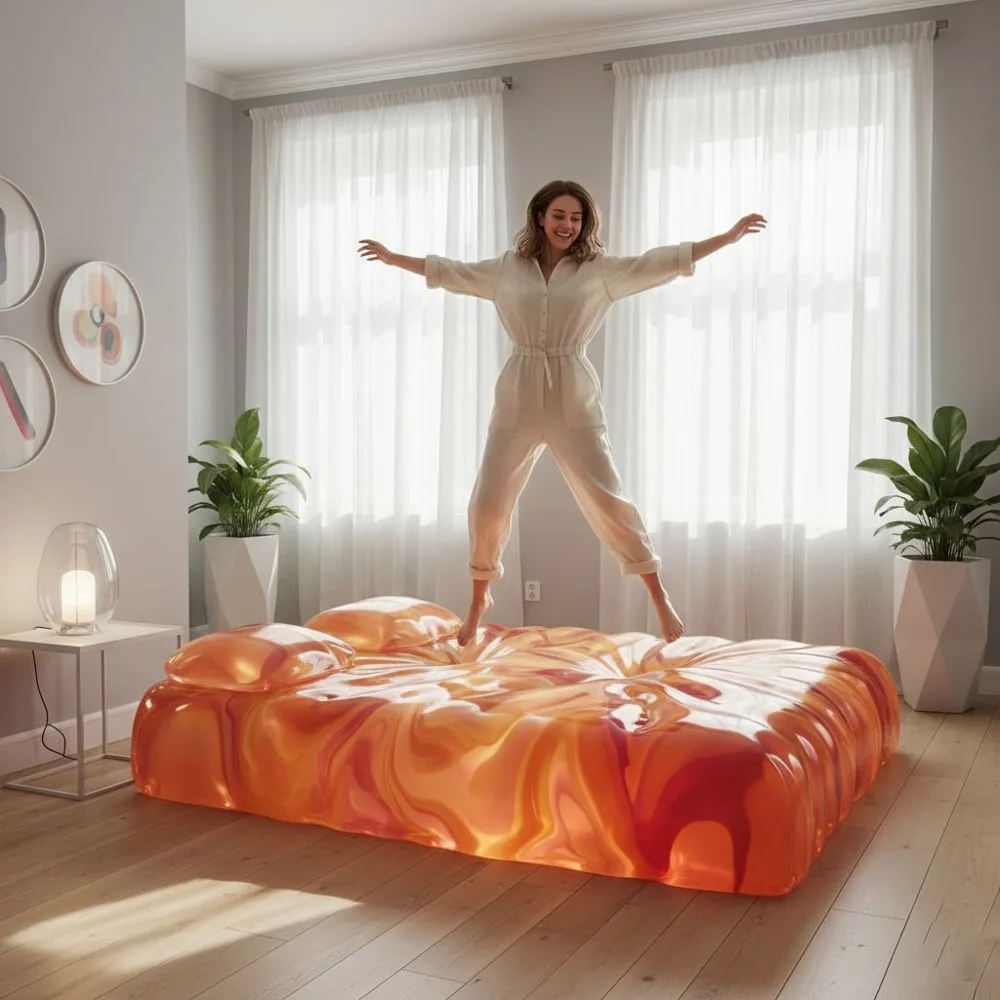
Understanding the science behind jelly beds helps explain why they’ve gained such popularity among sleep enthusiasts and medical professionals alike. The gel used in these mattresses undergoes a specific manufacturing process that creates a substance with unique viscoelastic properties. This means the material can change shape under pressure but returns to its original form once the pressure is removed.
Temperature regulation stands as one of the most significant scientific advantages of gel technology. Traditional memory foam mattresses tend to trap body heat, creating an uncomfortably warm sleeping environment. The gel compounds used in jelly beds, however, have higher thermal conductivity, allowing heat to dissipate more effectively. This creates a cooler sleeping surface that many people find more comfortable, especially during warmer months.
From a biomechanical perspective, the way gel responds to body weight creates an optimal sleeping position. The material provides firmer support where your body weighs more, such as the hips and shoulders, while offering softer cushioning for lighter areas. This dynamic response helps maintain natural spinal curvature throughout the night, potentially reducing back pain and improving overall sleep quality.
Health Benefits and Therapeutic Advantages
The therapeutic benefits of jelly beds extend far beyond simple comfort. Medical professionals and sleep specialists have recognized several key advantages that make these beds particularly beneficial for certain individuals and health conditions.
Pressure point relief stands at the forefront of health benefits. For people suffering from arthritis, fibromyalgia, or other chronic pain conditions, the gel material’s ability to distribute body weight evenly can significantly reduce discomfort. The conforming nature of the gel eliminates hard pressure points that can restrict blood flow and cause numbness or tingling during sleep.
Spinal health improvement represents another crucial benefit. Proper spinal alignment during sleep is essential for preventing back pain and maintaining overall musculoskeletal health. Jelly beds provide consistent support that adapts to different sleeping positions, whether you prefer sleeping on your back, side, or stomach. This adaptability helps keep the spine in a neutral position, reducing strain on muscles and ligaments.
For allergy sufferers, many jelly beds offer hypoallergenic properties. The dense gel material and often accompanying covers resist dust mites, mold, and other allergens that commonly accumulate in traditional mattresses. This makes them an excellent choice for people with respiratory issues or skin sensitivities.
Motion isolation is particularly beneficial for couples sharing a bed. The gel material absorbs movement, preventing disturbances when one partner shifts position or gets up during the night. This feature can dramatically improve sleep quality for both individuals, leading to more restful nights and better daytime functioning.
Comparing Jelly Beds to Traditional Mattress Types
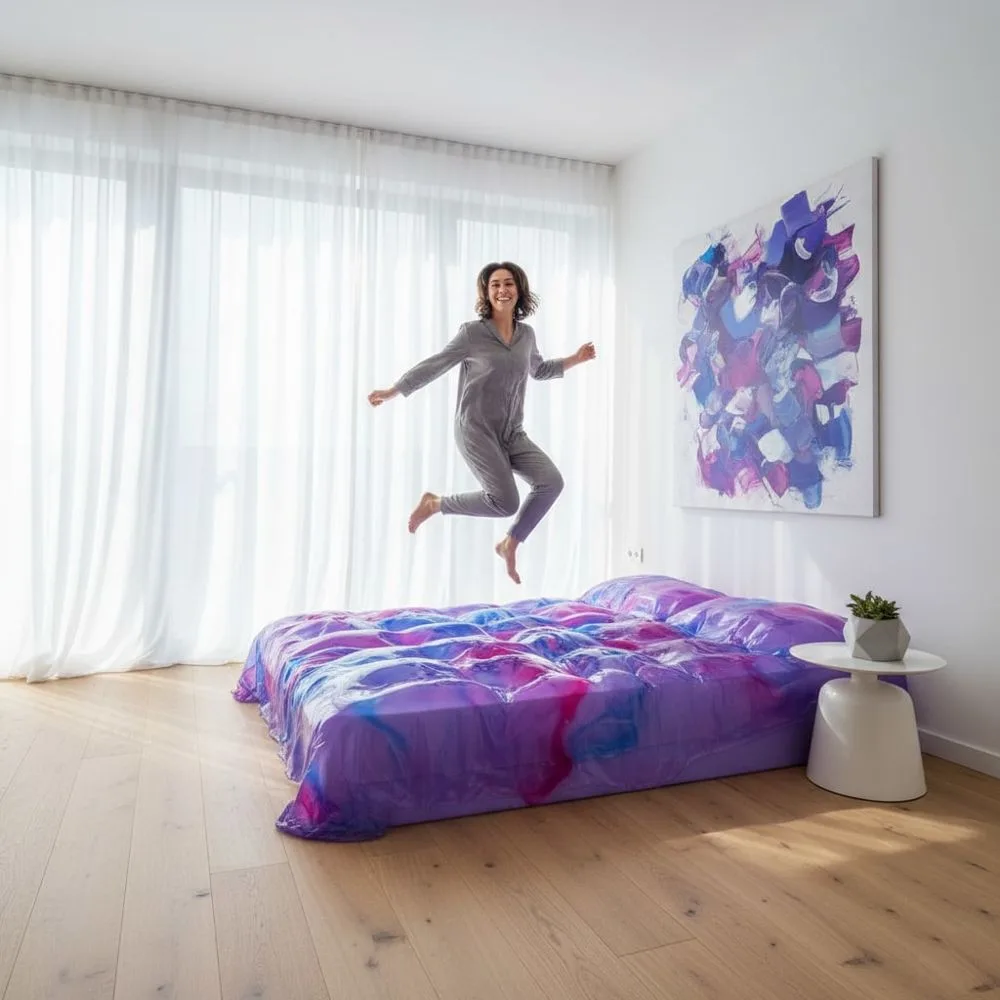
When considering a jelly bed, it’s helpful to understand how they stack up against more conventional mattress options. Each type of mattress has its strengths and weaknesses, and knowing these differences can guide your purchasing decision.
Traditional innerspring mattresses have been the standard for decades, offering bounce and breathability. However, they often lack the pressure relief and motion isolation that jelly beds provide. Springs can also develop squeaks over time and may create pressure points, particularly for side sleepers.
Memory foam mattresses share some similarities with jelly beds, particularly in terms of pressure relief and body conforming properties. However, traditional memory foam often retains more heat and can feel too soft or enveloping for some sleepers. Jelly beds typically offer better temperature regulation and a more responsive feel that makes changing positions easier during the night.
Latex mattresses provide natural bounce and durability but typically come with a higher price tag. While latex offers good pressure relief, it doesn’t conform to the body quite as closely as gel materials. Jelly beds often strike a middle ground, offering the contouring benefits of foam with better temperature control and a more responsive surface.
Air beds allow for customizable firmness but require more maintenance and can develop leaks over time. Jelly beds require less adjustment and maintenance while still providing excellent support and comfort across a range of body types and sleeping preferences.
Choosing the Right Jelly Bed for Your Needs
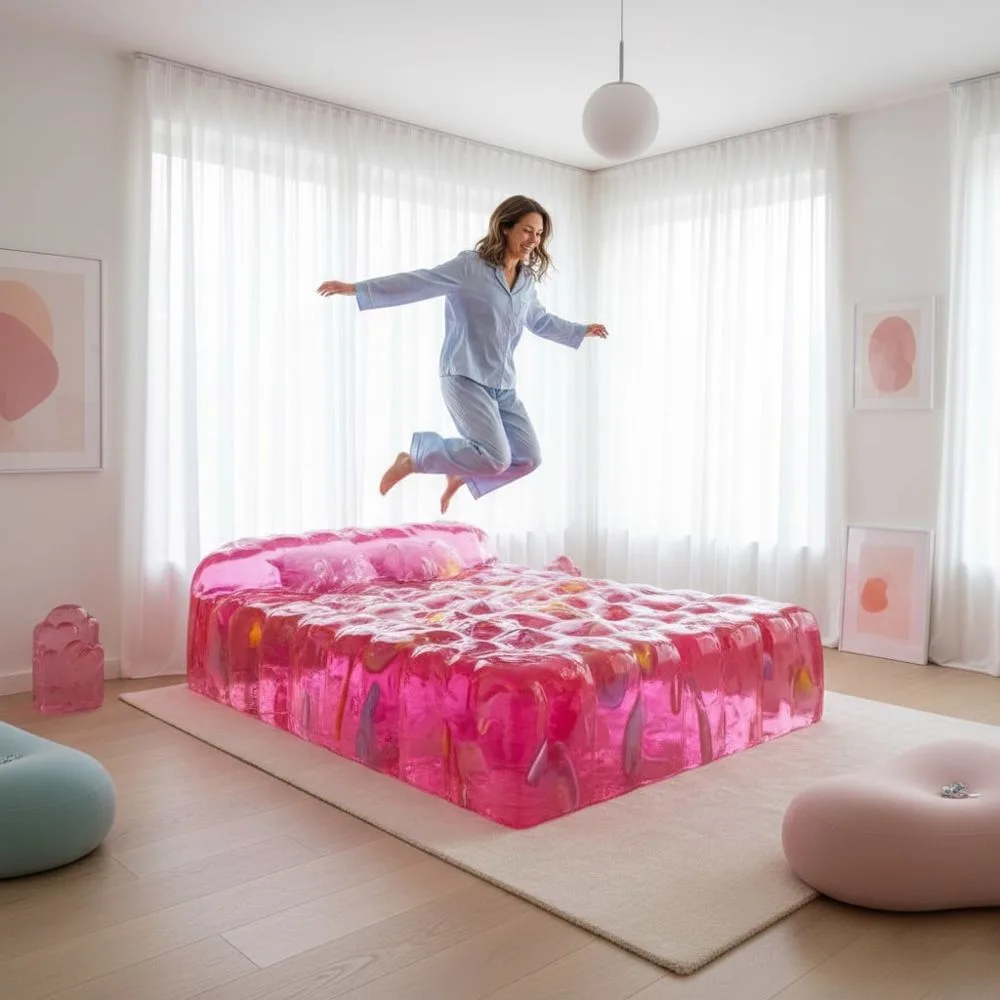
Selecting the perfect jelly bed involves considering several important factors that align with your personal preferences, physical needs, and budget constraints.
Firmness level is perhaps the most crucial consideration. Jelly beds come in various firmness options, typically ranging from soft to firm. Side sleepers often prefer softer options that cushion the shoulders and hips, while back and stomach sleepers may need firmer support to prevent the midsection from sinking too deeply. Your body weight also plays a role, with heavier individuals generally requiring firmer mattresses for adequate support.
Thickness and construction matter significantly. Jelly beds typically range from eight to fourteen inches thick. Thicker mattresses generally offer more gel material and support layers, which can be beneficial for heavier individuals or those with specific health concerns. Pay attention to the mattress construction, including the thickness of the gel layer, the quality of support layers, and the type of cover material used.
Brand reputation and warranty coverage should factor into your decision. Established manufacturers often provide better quality control, customer service, and warranty protection. Look for warranties that cover defects and sagging for at least ten years, as this indicates the manufacturer’s confidence in their product’s durability.
Budget considerations are realistic concerns for most buyers. Jelly beds span a wide price range, from budget friendly options to luxury models. While higher prices often correlate with better materials and construction, many mid range options offer excellent value and performance. Consider your purchase an investment in your health and wellbeing, as quality sleep affects every aspect of daily life.
Maintenance and Care for Longevity
Proper maintenance ensures your jelly bed provides optimal comfort and support for many years. Unlike traditional mattresses that may require flipping, gel mattresses typically need different care approaches.
Regular rotation is essential for even wear. Most manufacturers recommend rotating your jelly bed 180 degrees every three to six months. This prevents excessive compression in areas where you sleep most frequently and helps maintain consistent support across the entire surface.
Cleaning and protection extend your mattress’s lifespan significantly. Using a waterproof mattress protector shields the gel material from spills, stains, and body oils that can degrade materials over time. Clean any spills immediately using mild soap and cold water, avoiding harsh chemicals that might damage the gel or foam layers.
Temperature considerations affect gel performance. While jelly beds excel at temperature regulation, extreme temperatures can impact the gel material’s properties. Keep your bedroom at a comfortable temperature, typically between 60 and 70 degrees Fahrenheit, for optimal performance and longevity.
Foundation and support matter more than many people realize. Jelly beds require a solid, supportive foundation to perform correctly. Platform beds, box springs designed for foam mattresses, or slatted bases with slats no more than three inches apart all work well. Inadequate support can cause premature sagging and void your warranty.
Common Misconceptions and Myths Debunked
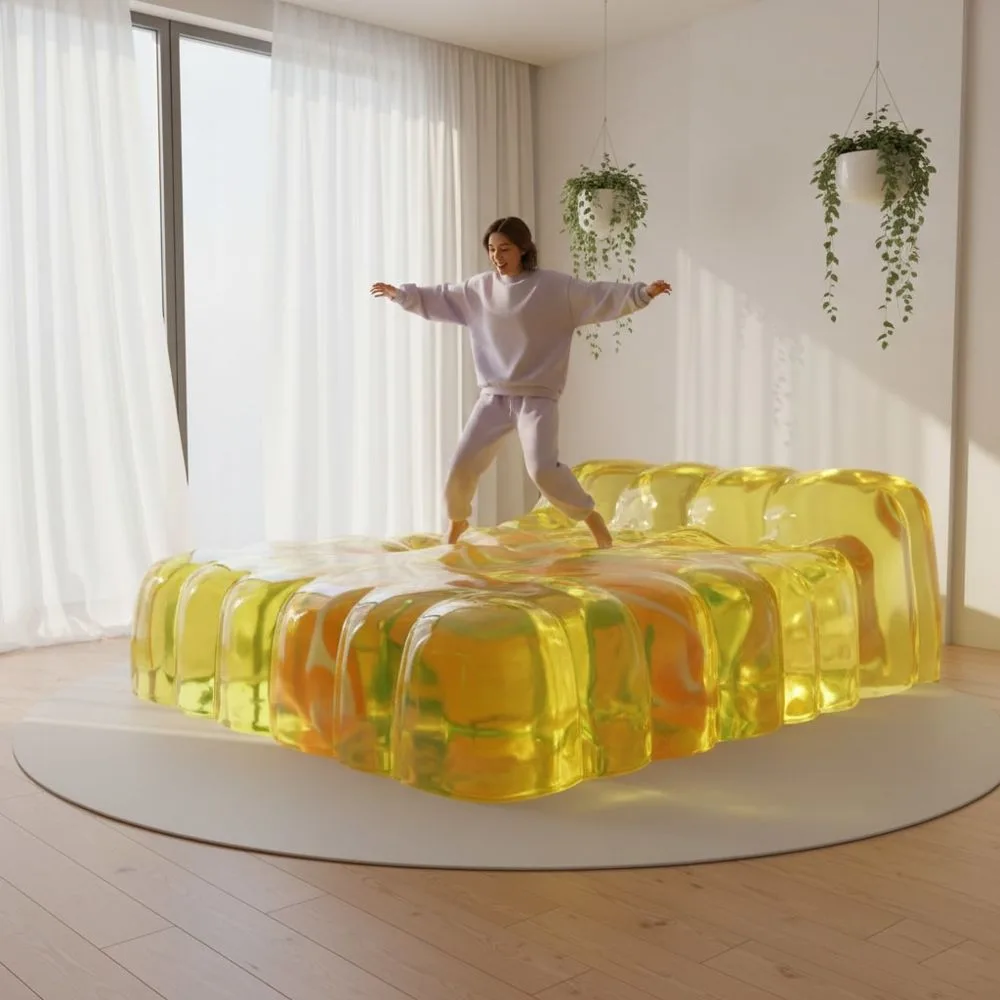
Several misconceptions surround jelly beds, and clearing up these myths helps potential buyers make informed decisions based on facts rather than fiction.
The myth that all gel mattresses feel the same couldn’t be further from the truth. Jelly beds vary significantly in construction, gel density, support layers, and overall feel. Just as traditional mattresses differ between brands and models, gel mattresses offer diverse sleeping experiences that cater to different preferences.
Some people believe jelly beds are too soft and lack support. In reality, these mattresses come in various firmness levels, including options that provide very firm support. The gel technology actually enhances support by distributing weight evenly and maintaining proper alignment, regardless of firmness level.
The concern that gel mattresses don’t last as long as traditional options is outdated. Modern manufacturing techniques and high quality materials mean today’s jelly beds often outlast conventional innerspring mattresses. Many come with warranties of ten years or more, demonstrating manufacturer confidence in their durability.
Another common misconception suggests that jelly beds are only beneficial for people with specific health issues. While these mattresses certainly help individuals dealing with chronic pain or other conditions, their benefits extend to anyone seeking improved sleep quality. The pressure relief, temperature regulation, and support features enhance sleep for virtually everyone.
Real User Experiences and What to Expect
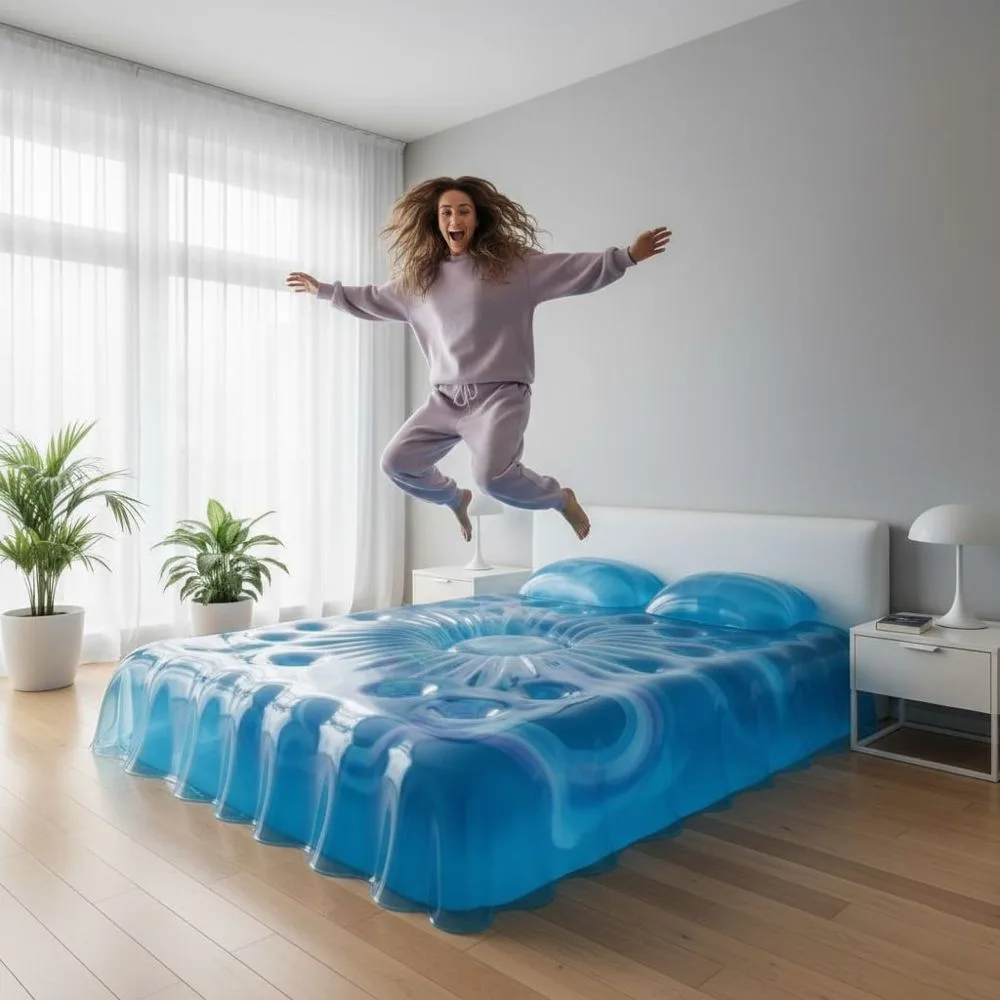
Understanding what real users experience with jelly beds provides valuable insight into what you might expect from your own purchase. While individual experiences vary, certain patterns emerge from user feedback and reviews.
The initial adjustment period is something new owners should anticipate. Many people report needing one to two weeks to fully adapt to their jelly bed, especially when transitioning from a traditional innerspring mattress. During this time, your body adjusts to the different support system, and any initial stiffness typically resolves as muscles and joints adapt to improved alignment.
Temperature comfort consistently ranks among the most praised features in user reviews. People who previously struggled with overheating during sleep often report dramatic improvements in comfort. The cooling effect of the gel technology helps maintain a more stable body temperature throughout the night, leading to fewer sleep disturbances.
Pain reduction represents another frequently mentioned benefit. Users with chronic back pain, hip discomfort, or shoulder issues often report significant improvement after switching to a jelly bed. The pressure relief and support combination addresses many common pain points that traditional mattresses exacerbate.
Partner disturbance becomes less problematic according to couples sharing jelly beds. The motion isolation properties mean that one person’s movements don’t transfer across the mattress surface, allowing both partners to sleep more soundly without disrupting each other.
Environmental Considerations and Sustainability
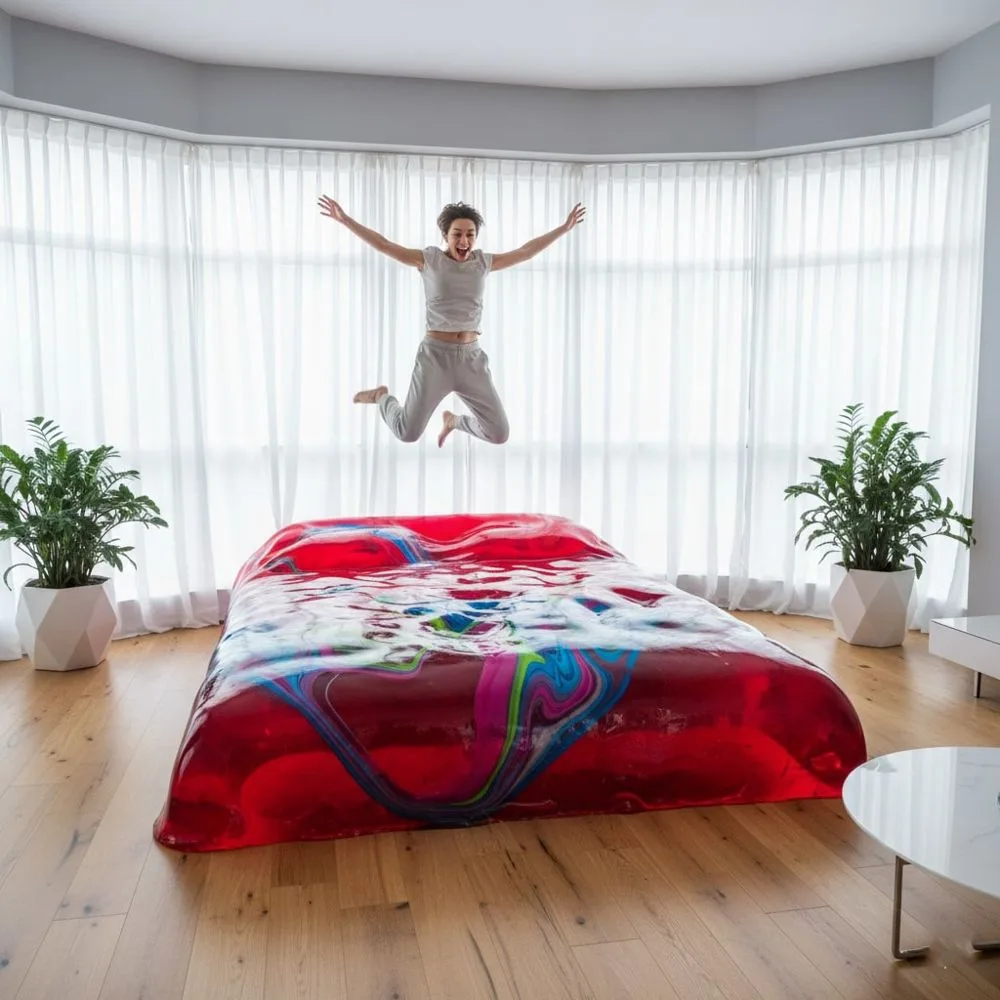
As environmental awareness grows, understanding the ecological impact of your mattress choice becomes increasingly important. Jelly beds present both advantages and considerations from a sustainability perspective.
Many manufacturers now produce gel mattresses using eco friendly materials and processes. Look for certifications like CertiPUR US, which indicates the foam and gel components meet specific environmental and health standards. These certifications ensure the materials are made without ozone depleters, heavy metals, formaldehyde, and other harmful substances.
Durability contributes to environmental friendliness. Because quality jelly beds often last longer than traditional mattresses, they reduce the frequency of replacement and the associated environmental impact of disposal and manufacturing. A mattress that performs well for fifteen years has a smaller environmental footprint than one requiring replacement every seven years.
Recycling options for gel mattresses continue to improve as the technology matures. While gel components present unique recycling challenges, many manufacturers now participate in mattress recycling programs that can break down and repurpose materials rather than sending them to landfills.
Manufacturing practices vary significantly between brands. Companies committed to sustainability often use renewable energy in production, minimize water usage, and implement responsible waste management practices. Researching a manufacturer’s environmental policies can help you choose a jelly bed that aligns with your values.
Wrapping Up Your Journey to Better Sleep
Jelly beds represent a significant advancement in sleep technology, offering a compelling combination of comfort, support, and therapeutic benefits that can transform your nightly rest. The unique properties of gel materials address many common sleep complaints, from temperature regulation to pressure point relief, making these mattresses an excellent choice for a wide range of sleepers.
Your decision to invest in a jelly bed should consider your personal sleep preferences, any health concerns you’re addressing, and practical factors like budget and mattress size. Take time to research different brands, read user reviews, and understand warranty coverage before making your purchase. Many companies offer trial periods that allow you to test the mattress in your own home, providing valuable assurance that you’re making the right choice.
Remember that quality sleep is fundamental to overall health and wellbeing. The right mattress supports not just your body but your entire lifestyle, affecting everything from mood and productivity to physical health and relationships. Whether you’re dealing with specific pain issues or simply seeking to optimize your sleep experience, a jelly bed might be the innovative solution that finally delivers the restful nights you deserve. Sweet dreams await on your journey to discovering the perfect sleep surface.

